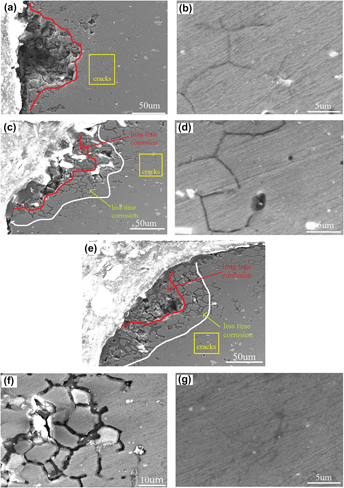Published online by Cambridge University Press: 05 December 2016

Influence of corrosion/fatigue factors on the fatigue life of 7B04-T6 aluminum alloys were studied in this paper. Different kinds of alternating corrosion-fatigue tests were carried out. Three factors influencing fatigue life were investigated: pre-corrosion time, corrosion/fatigue alternation frequency, and specimen’s size. The results show that: with the extension of pre-corrosion time, fatigue lives decreased; although the total corrosion time was the same (192 h), as the corrosion/fatigue alternation frequency increased, the total fatigue lives increased. The total fatigue lives of specimens subjected to two, four, and six corrosion/fatigue cycles (n = 2, 4, 6), in which specimens underwent pre-corrosion for 96 h per cycle (n = 2), 48 h per cycle (n = 4), and 32 h per cycle (n = 6), respectively, was measured. It was found that the fatigue lives increased by 56.4, 84.4, 136%, as the number of cycles increased, compared to tests in which no alternation took place (192 h of continuous corrosion). When exposed to the same corrosion times, different sized specimens demonstrated different fatigue lives. The fatigue lives of small specimens were shorter than the larger specimens. These results are all due to the specific properties of corrosion/fatigue factors.